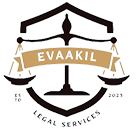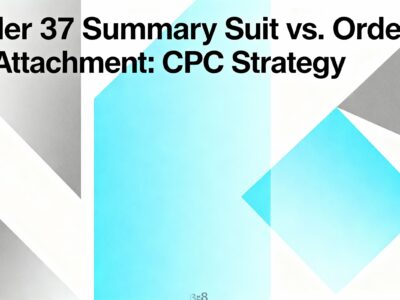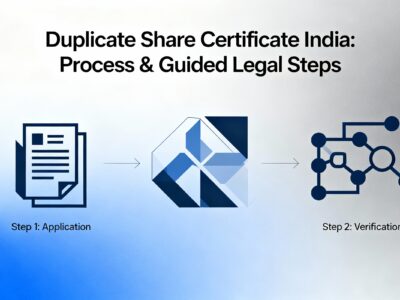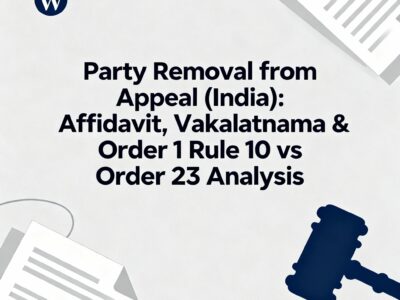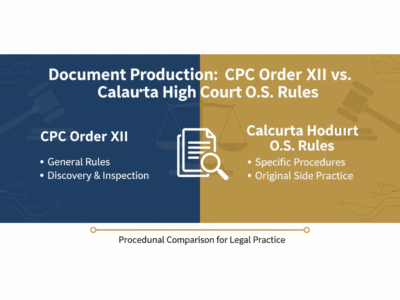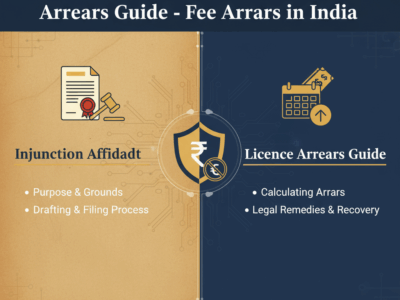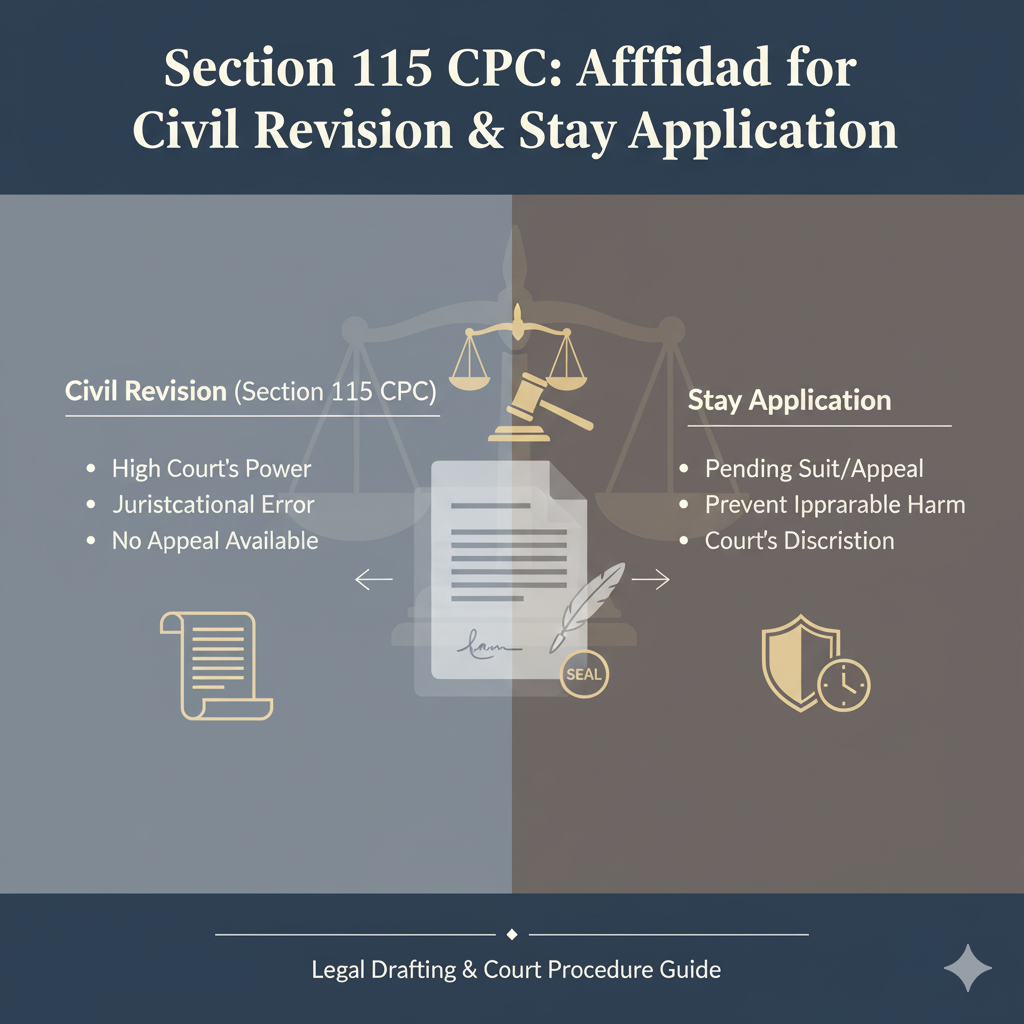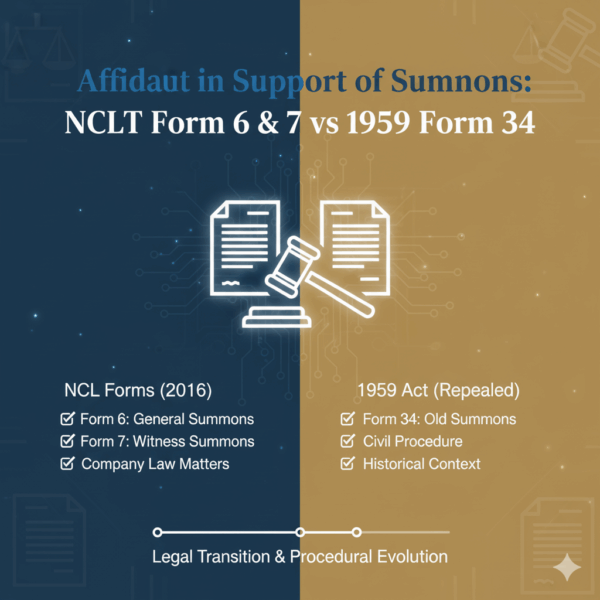When you register a document like a sale deed, the Sub-Registrar’s Office (SRO) is not a “service provider.” It is a government authority performing a statutory duty. A common misunderstanding is that the SRO investigates and confirms the property’s legal ownership (title). This is incorrect.
The Sub-Registrar’s role is limited. They are not allowed to conduct a “roving enquiry” into title or possession. The law puts the responsibility of checking the title (due diligence) entirely on the purchaser. This creates a gap: the SRO must register the deed but will not verify the seller’s claim that the property is “free from all litigation.” The affidavit is the legal tool used to bridge this gap.
Affidavits in Document Registration: A Legal Analysis
A guide to the affidavits required by the Sub-Registrar in India, from property sales to personal documents.
Why Does the Sub-Registrar Need an Affidavit?
When you register a document like a sale deed, the Sub-Registrar’s Office (SRO) is not a “service provider.” It is a government authority performing a statutory duty. A common misunderstanding is that the SRO investigates and confirms the property’s legal ownership (title). This is incorrect.
The Sub-Registrar’s role is limited. They are not allowed to conduct a “roving enquiry” into title or possession. The law puts the responsibility of checking the title (due diligence) entirely on the purchaser. This creates a gap: the SRO must register the deed but will not verify the seller’s claim that the property is “free from all litigation.”
The affidavit is the legal tool used to bridge this gap.
The “Liability-Transfer” Mechanism
1. Unverified Claim
The Seller states, “This property has no legal cases.” The SRO cannot verify this fact.
2. Sworn Affidavit
The SRO requires the Seller to swear an affidavit, making the statement under oath.
3. Liability Transferred
The SRO is protected. The Seller is now personally liable for the false statement (perjury, fraud).
What Makes an Affidavit Valid?
An affidavit is a formal written statement of facts, made voluntarily, and confirmed by the oath or affirmation of the person making it (the deponent). To be legally valid and accepted by the Sub-Registrar, it must follow a specific procedure:
- Drafting: The document is drafted in a specific format, identifying the deponent, followed by numbered declarations (“I… do hereby solemnly affirm and declare…”). It ends with a verification clause where the deponent swears the contents are true.
- Stamp Paper: The affidavit must be printed on non-judicial stamp paper of the correct value, as set by the state’s stamp act (e.g., ₹10 in West Bengal).
- Execution (Notarization): The deponent must swear the affidavit before an official authorized to administer oaths. This is usually a Notary Public. The Notary verifies the deponent’s identity, witnesses the signature, and affixes their seal. This act makes the statement legally binding.
Visual Guide: Anatomy of an Affidavit
While the content varies, the legal structure of an affidavit is standardized. Each part serves a specific legal function.
BEFORE THE NOTARY PUBLIC AT [CITY]
AFFIDAVIT
Identifies the document’s purpose and the legal authority (Notary) it’s sworn before.
“I, [Full Name], son of [Father’s Name], aged about [Age] years, residing at [Full Address], do hereby solemnly affirm and declare…”
The person swearing the affidavit. This section establishes their identity, age, and address, confirming they are a specific, traceable individual.
“1. That I am the owner of [Property Details]…
2. That the said property is free from all encumbrances…”
The core of the affidavit. These are the numbered statements of fact that the deponent swears are true. Each paragraph should ideally cover one fact.
“VERIFICATION
I, the deponent above named, do hereby verify that the contents of paragraphs 1 to 3 are true and correct to the best of my knowledge and belief…”
This clause legally binds the deponent to the truthfulness of the entire statement, confirming they have read and understood it.
“Sworn before me on this [Date] day of [Month], [Year] at [Place].
(Signature of Deponent)
(Signature & Seal of Notary Public)”
The final step. The deponent signs in front of the Notary, who then signs and seals the document. This “attestation” makes the affidavit legally valid.
Affidavit vs. Indemnity Bond: What’s the Difference?
Parties, and sometimes even SROs, use these terms interchangeably. They are legally distinct and serve different purposes, though they are often used together.
Affidavit
“I swear this is true.”
- Purpose: A sworn statement of facts.
- Function: To present facts to an authority (the SRO) under oath.
- Legal Consequence: If false, the deponent faces criminal charges (perjury).
- Example: “I swear there is no litigation on this property.”
Indemnity Bond
“I promise to pay for your loss.”
- Purpose: A contract to compensate for potential loss.
- Function: To provide financial security to the other party (the buyer).
- Legal Consequence: If a loss occurs, the signatory must pay damages.
- Example: “If any litigation appears, I will pay all your legal costs and losses.”
In many high-risk transactions (like obtaining a certified copy of a lost deed), the SRO will demand both: an affidavit from the seller stating the facts of the loss, and an indemnity bond from the seller promising to protect the SRO and any future buyer from loss.
Affidavits for Property Sale Deeds
For a typical sale deed registration, several declarations are standard.
1. The ‘Non-Encumbrance’ and ‘No Litigation’ Affidavit
This is the most common affidavit. The seller swears to the status of the property’s title. The Encumbrance Certificate (EC) from the SRO only shows *registered* transactions. It does not show pending court cases or unregistered claims. This affidavit fills that gap.
The seller must swear that the property is:
- Free from all encumbrances, claims, and demands.
- Not subject to any court-issued charge or attachment.
- Not involved in any pending suit, writ, or legal proceeding.
- Not under any notice of acquisition from the government.
2. TDS Compliance Declaration (Form 26QB)
The SRO now helps enforce tax policy. Under Section 194-IA of the Income Tax Act, if the sale value (or stamp duty value) is ₹50 lakhs or more, the *buyer* must deduct Tax Deducted at Source (TDS) at 1%.
The SRO will *refuse* to register the sale deed unless the buyer provides proof of this TDS payment. This proof is the challan generated from filing **Form 26QB**. This is a mandatory financial declaration to the state.
3. Affidavit of Consideration
Many SROs require the seller to attach an affidavit declaring they have received the full and final payment as mentioned in the sale deed. This formally closes the transaction on record and helps prevent future disputes about payment.
Affidavit Complexity by Transaction
The required declarations change based on the transaction’s legal risk. Simple transactions may need no affidavit, while complex ones require multiple, specific sworn statements.
State-Specific Rules: West Bengal Case Study
Central laws provide a baseline, but individual states add their own requirements. West Bengal’s rules for urban land are a clear example.
The central Urban Land (Ceiling and Regulation) Act, 1976 (ULC Act), placed a limit on how much vacant land a person could own in cities. To enforce this, West Bengal law added a rule: no registration of urban land without a written permission order from the District Collector.
This rule would create a massive administrative bottleneck. The “Two-Part Affidavit (Form II)” was created as a practical substitute.
The Legal Problem
State law (S. 4E, WB Land Reforms Act) bars the SRO from registering urban land *unless* the Collector gives written permission, which is slow and difficult to get.
The Affidavit Solution
The SRO accepts a “Two-Part Affidavit” *instead* of the Collector’s order. Both buyer and seller must swear they are compliant with the ULC Act, transferring the liability to themselves.
This affidavit, mandated by the e-Nathikaran online system, requires:
- Part I (Seller): Swears the land is *not* “surplus land” under the ULC Act.
- Part II (Buyer): Swears that *after* the purchase, their total land holding will still be *within* the ceiling limit.
Module: e-Stamping and Digital Affidavits
The process of creating affidavits is modernizing, moving away from physical stamp paper.
1. The Shift to e-Stamping
Most states, through the Stock Holding Corporation of India Limited (SHCIL), have replaced traditional non-judicial stamp papers with e-stamp certificates. When drafting an affidavit, this means:
- You no longer buy a physical stamp paper of a specific denomination (e.g., ₹10).
- Instead, you pay the ₹10 fee online or at an authorized center and receive an e-stamp certificate.
- This certificate contains a unique ID, party names, and a barcode for verification.
- The affidavit content is then printed directly on (or as an annexure to) this e-stamp certificate.
This system makes the process faster and, more importantly, prevents the use of fraudulent or back-dated stamp papers.
2. The Status of Digital Affidavits
The concept of a fully “digital” affidavit (e.g., using a digital signature like Aadhaar e-Sign) is still evolving. While the Information Technology Act, 2000, gives legal recognition to electronic signatures, its adoption at the Sub-Registrar level for affidavits is slow and inconsistent.
The core problem is the legal requirement for the deponent to “appear before” the Notary. Most SROs and Notaries still interpret this as requiring a physical presence. While some digital services (like ‘e-Notarization’) are emerging, they are not yet universally accepted by Sub-Registrars for property documents. For now, expect the process to be a hybrid: digital payment (e-stamping) followed by physical presence (signing before a Notary).
Personal and Succession Documents
The SRO also handles personal documents, which have their own affidavit needs.
1. Marriage Registration
The Sub-Registrar often acts as the Marriage Officer under the Special Marriage Act, 1954. To prevent illegal marriages, the SRO requires a joint affidavit from the parties. They must swear to:
- Their age and identity (proving they are of legal marriageable age).
- Their current marital status (i.e., unmarried, or legally divorced/widowed).
- That they are not related within the “prohibited degree of relationship.”
2. Will Registration (Post-Death)
Registering a Will is optional. However, a Will can be presented for registration *after* the testator’s death. Since the person who signed it is deceased, the SRO must conduct an enquiry.
To register the Will, the SRO demands affidavits from the *attesting witnesses* (the people who watched the testator sign). These witnesses must swear that:
- They were present and saw the testator sign the Will.
- The testator was of sound mind at the time.
- The testator signed of their own free will.
Procedural Affidavits: Correcting the Record
Beyond new transactions, affidavits are crucial for managing and correcting the SRO’s existing records. These are sworn statements that justify a change or request.
1. Affidavit for Certified Copy (Lost Deed)
If an original registered deed is lost, stolen, or destroyed, the owner cannot sell the property. To get a “Certified Copy” from the SRO (which has legal value), the owner cannot just ask for it. They must prove the loss. The SRO will demand a comprehensive application that includes:
- An Affidavit of Loss, swearing to the facts of how the deed was lost.
- A copy of the First Information Report (FIR) filed with the police.
- A copy of a public notice (newspaper advertisement) announcing the loss.
The affidavit acts as the formal, sworn testimony that initiates this process.
2. Affidavit for Rectification Deed
A “Rectification Deed” is used to correct minor, good-faith errors in a registered deed (e.g., a spelling mistake in a name, a typo in the property area). To register this correction, both original parties must execute it. The SRO may also require an affidavit from both parties. In this, they swear that:
- The error was a genuine, unintentional mistake.
- The correction does not change the fundamental nature of the transaction (e.t., it’s not a disguised new sale).
- The identity of the parties and property remains the same.
3. Affidavit for Name Change (e.g., Post-Marriage)
If a property owner’s name changes (e.g., after marriage), they cannot simply update their name on the old deed. When they sell the property, they must prove they are the same person. This is done with a “One and the Same Person Affidavit.” The deponent swears that [Old Name] (as written on the deed) and [New Name] (as on their current ID) refer to the same individual. This affidavit, often supported by a marriage certificate or gazette notification, bridges the gap in identity for the SRO.
Affidavit Requirements: At-a-Glance
Use the filters to find the documents relevant to your transaction.
| Transaction | Affidavit / Declaration | Purpose |
|---|---|---|
| Property Sale (General) | Non-Encumbrance Affidavit | Swear property is free from unregistered claims/litigation. |
| Property Sale (> ₹50 Lakhs) | Proof of TDS (Form 26QB) | Provide proof of 1% TDS payment to Income Tax Dept. |
| Urban Land (West Bengal) | Two-Part Affidavit (Form II) | Swear compliance with Urban Land Ceiling Act (by buyer & seller). |
| Marriage (Special Act) | Joint Affidavit of Parties | Swear as to legal age, marital status, and no prohibited relationship. |
| Will (Registration Post-Death) | Affidavit of Attesting Witness | Swear the testator was of sound mind and signed in their presence. |
| Lost Sale Deed (for Copy) | Affidavit of Loss | Swear the original deed is lost; must attach FIR and newspaper ad. |
| Rectification Deed | Affidavit (Situational) | Confirm identity of parties or that the error was a genuine mistake. |
| Gift Deed | None (Generally) | Facts are on the deed. Must prove relationship for stamp duty benefits. |
| Lease Agreement (> 1 Year) | None (Generally) | The agreement itself contains all material facts (rent, duration). |
Affidavit Template Formats
These are simplified templates for educational purposes. You must consult a legal professional for drafting official documents.
Template: General Non-Encumbrance Affidavit (Seller)
I, [Seller's Name], son/daughter of [Father's Name], aged [Age], residing at [Address], do hereby solemnly affirm and declare as under:
1. That I am the owner in respect of the property [Property Details], acquired by me vide Sale Deed dated [Date], registered as [Document No].
2. That the possession of the said property is with me.
3. That the said property is free from all encumbrances, claims, demands, charges, and is not subject to any attachment or process issued by any Court of Law.
4. That no suit, writ, or other proceeding is pending against me with respect to the said property.
5. That no notice of acquisition or requisition from any authority has been received by me.
I, the deponent above named, do hereby verify that the contents of this affidavit are true and correct to the best of my knowledge and belief.
Deponent
[Place, Date]
Template: West Bengal Two-Part Affidavit (Form II)
(Based on official forms for transfer of urban vacant land)
[On Non-Judicial Stamp Paper]
PART - I (Affidavit of Seller/Transferor)
I/We, [Seller's Name(s)],... do jointly and severally solemnly affirm and declare as under:
1. That I/we am/are the Owner(s) of the property [Property Schedule].
2. That the said land is situated within [Zone Name] as per the sanctioned plan.
3. That the said Land is not surplus land under the provisions of the Urban Land (Ceiling and Regulation) Act, 1976 (ULC Act).
...
[Verification Clause]
Deponent(s)
PART - II (Affidavit of Buyer/Transferee)
We, [Buyer's Name(s)],... do jointly and severally solemnly affirm and declare as under:
1. That by Deed of Conveyance dated [Date] we have purchased the aforesaid property.
2. We state that even after the proposed transfer of the said land, our total extent of land holdings would be within the ceiling limit as specified under the Urban Land (Ceiling and Regulation) Act, 1976.
3. We undertake to file the necessary statement if our holdings later exceed the ceiling limit.
...
[Verification Clause]
Deponent(s)
Sworn before me,
(NOTARY PUBLIC)
Template: Affidavit for Lost Deed (for Certified Copy)
I, [Owner's Name], son/daughter of [Father's Name], aged [Age], residing at [Address], do hereby solemnly affirm and declare as under:
1. That I am the legal owner of the property [Property Details].
2. That the original Sale Deed dated [Date], registered as [Document No.] with the Sub-Registrar [Office Name], has been lost and is not traceable.
3. That I have filed a First Information Report (FIR) with the [Police Station Name] police station, and a copy of the same is attached herewith.
4. That I have also published a public notice in the [Newspaper Name] newspaper dated [Date] regarding the loss of the said deed. A copy of the advertisement is attached.
5. That I require a certified copy of the said Sale Deed from the Sub-Registrar's records.
I verify that the contents of this affidavit are true and correct.
Deponent
[Place, Date]
Frequently Asked Questions (FAQ)
No. An affidavit is only a sworn statement of facts. The Sub-Registrar’s acceptance of an affidavit does not mean the SRO has verified or confirmed the facts are true. Legal ownership is established by a valid chain of title deeds (like sale deeds, partition deeds, etc.), not by an affidavit alone.
Swearing a false affidavit is a serious offense. You can face criminal charges for perjury (giving a false statement under oath). In a property transaction, if the other party suffers a loss because of your false statement, they can also file a civil suit against you for fraud and misrepresentation. The false affidavit will be used as primary evidence against you.
Yes, the content can be drafted by you or a lawyer. However, it must be printed on non-judicial stamp paper of the appropriate value. Most importantly, it has no legal value until you (the deponent) personally appear before a Notary Public or other authorized official, sign it in their presence, and have them attest it with their official seal.
A Deed (like a Sale Deed or Gift Deed) is a legal instrument that *transfers* rights, title, and interest from one person to another. It is the main transaction document.
An Affidavit is a *supporting* document. It does not transfer any any rights. It is simply a sworn statement of facts, used to support the claims made in the main deed (e.g., “I swear I am the owner,” “I swear this property has no loans”).
Expert Recommendations for Parties
Treat Every Affidavit as Testimony. An affidavit is not a mere form. It is a sworn statement, just like testimony in court. You are personally and legally liable for every statement in it.
Read Before You Sign. Document writers often provide standard, pre-drafted affidavits. Never sign such a document without reading and understanding every declaration. A casual signature on a “no pending litigation” clause can lead to serious legal problems if a forgotten dispute exists.
The State is Not Your Verifier. The Sub-Registrar’s acceptance of your affidavit is not a confirmation that its contents are true. It is only a procedural acceptance that the statement has been *filed*. The responsibility for due diligence (title search, risk assessment) remains with the parties, especially the purchaser.
State-Level Rules are Paramount. As the West Bengal case shows, state governments add specific rules. A practice in one state may be different in another. Always check the local SRO’s official portal (like e-Nathikaran) or consult a local lawyer for the most current checklists.
